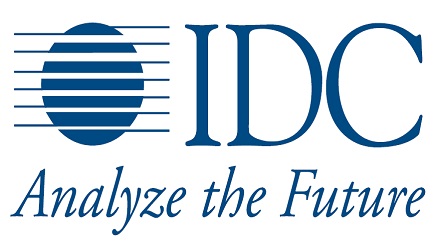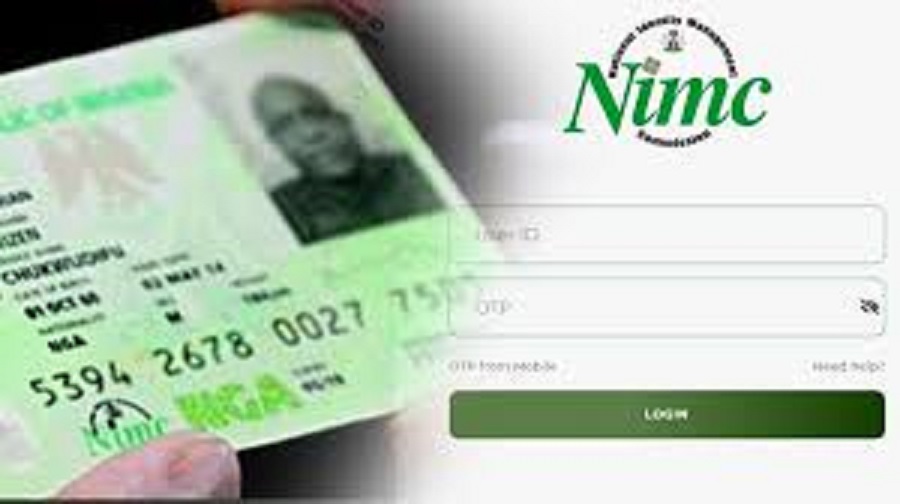E-Business
Report Explores Use of Advanced Analytics for Improved Detection

Financial firms constantly face a myriad of schemes and “bad actors” determined to commit fraud and gain access to customer accounts and funds.
These bad actors are taking advantage of digital services and digital transactions to develop new frauds and schemes.
Meanwhile, transactions are happening digitally and faster than ever before. As a result, IDC Financial Insights recommends that firms invest in new sources and combinations of data and advanced analytics to help uncover relationships between individuals, transactions, and events in real time (or near real time). In a new report, Business Strategy: The Use of Advanced Analytics in Fraud Detection and Prevention (Doc #US40137216), IDC Financial Insights examines the challenges and opportunities that firms face in developing and deploying fraud detection and prevention programs.
In this new report, IDC Financial Insights takes a look at the case for leveraging aggregated data and advanced analytics to improve fraud detection prevention programs at financial firms. Today’s fraudsters mimic customer and employees identities and legitimate transactions to avoid detection and arrest.
To effectively combat this threat, IDC Financial Insights recommends financial firms use a combination of visible and less visible strategies to asses current and future fraud risks, develop deterrents to prevent fraudulent activity, and reduce the opportunities for customers, employees, and bad actors to commit fraud.
Lead author and IDC Financial Insights Research Director, Bill Fearnley, illustrates with this example, “Imagine you are speeding on a highway with a keen eye out for law enforcement and speed traps.
“You’re getting away with it so far. But wait, there is a police plane flying above and behind you that you don’t see, monitoring your trip. Blue lights ahead.
You are busted, by someone you didn’t know was there. Welcome to the new world of fraud analytics – deploying tools that firms can deploy to catch bad actors, from a perch that fraudsters cannot see.”
Highlights Of The New Report Include:
A discussion on some of the fraud threat forms, including: account takeover (ATO), phishing schemes, new account fraud, fraudulent transactions, and malware.
IDC Financial Insights believes firms must be proactive in their fraud prevention and apply a risk-based approach to customer and transaction risk scoring.
Third party data and analytics service providers can deliver access to aggregated data and advanced analytics that provide insights “outside the walls” of the firm and help analysts uncover relationships, patterns, and anomalies in customer relationships and transactions.
IDC Financial Insights recommends firms take a dual approach to fraud detection and prevention with a combination of highly visible (i.e. multiple cameras) and less visible programs.
For less visible detection and prevention programs, aggregating internal data and external data and deploying advanced analytics (e.g. cognitive computing, machine learning, and complex event processing) can help firms take a wider view of data and information to discover new patterns and anomalies. Moreover, IDC Financial Insights outlines the following key actions to consider:
Centralize fraud operations: Centralizing operations, data sharing, and enabling collaboration among business units can help analysts uncover patterns and anomalies in transactions that look fine when viewed in isolation, but when combined may show patterns of fraud.
Augment fraud systems with 3rd party data and analytics: The insights gleaned in doing so can be used to augment customer profiles and investigations of bad actors and suspicious transactions.
Balance the customer experience and security requirements: Using advanced analytics and monitoring models can help to prevent fraud before it happens while limiting interference with the customer experience.
Deploy MDM strategies and tactics: It’s increasingly important for firms to have formal master data management (MDM) policies and procedures in place so that information is secure and that access to sensitive information and analysis is granted on a very selective basis.
Fearnley added, “Criminals and bad actors are developing more creative and aggressive fraud schemes and tactics to avoid detection and arrest. To effectively combat these threats, firms should be investing in risk-based approaches to fraud detection and prevention and using their privileged access to customer information and third party data and analytics services and combining them to help augment and automate their fraud prevention programs.”
E-Business
Microsoft Server Hack Likely Solo Actor, Thousands at Risk

A widespread cyberattack targeting Microsoft’s (MSFT.O) server software used by thousands of government agencies and businesses for internal document sharing was likely orchestrated by a single actor, a cybersecurity researcher said on Monday.

Microsoft issued an alert on Saturday warning of “active attacks” on on-premise SharePoint servers.
The company clarified that SharePoint Online, part of the Microsoft 365 cloud suite, was not affected by the exploit, which is considered a “zero-day” vulnerability due to its previously undiscovered nature.
“Based on the consistency of the tradecraft seen across observed attacks, the campaign launched on Friday appears to be a single actor. However, it’s possible that this will quickly change,” Rafe Pilling, director of Threat Intelligence at Sophos, a British cybersecurity firm.
That tradecraft included the sending of the same digital payload to multiple targets, Pilling added.
Microsoft said it had “provided security updates and encourages customers to install them,” a company spokesperson said in an emailed statement.
It was not clear who was behind the ongoing hack. The FBI said on Sunday it was aware of the attacks and was working closely with its federal and private-sector partners, but offered no other details.
Britain’s National Cyber Security Centre did not immediately respond to a request for comment.
The Washington Post said unidentified actors in the past few days had exploited a flaw to launch an attack that targeted U.S. and international agencies and businesses.
According to data from Shodan, a search engine that helps to identify internet-linked equipment, over 8,000 servers online could theoretically have already been compromised by hackers.
Those servers include major industrial firms, banks, auditors, healthcare companies, and several U.S. state-level and international government entities.
“The SharePoint incident appears to have created a broad level of compromise across a range of servers globally,” said Daniel Card of British cybersecurity consultancy, PwnDefend.
“Taking an assumed breach approach is wise, and it’s also important to understand that just applying the patch isn’t all that is required here.”
E-Business
Flaw in Microsoft SharePoint Sparks Global Cybersecurity Concern

A Microsoft SharePoint server software flaw is causing widespread concern across the global cybersecurity landscape, exposing thousands of organisations to hackers exploiting a new vulnerability.

This critical vulnerability exposes government agencies, universities, and energy firms who are at risk of cyberattacks. The flaw, now being actively exploited by unidentified hackers, allows attackers to gain deep, remote access to on-premise SharePoint servers.
The U.S. Cybersecurity and Infrastructure Security Agency (CISA) has confirmed that the vulnerability can enable malicious actors to access internal files, change configurations, and even execute remote code, effectively giving them high-level control over compromised systems.
Microsoft has also acknowledged the breach and released a security patch aimed at stopping the ongoing attacks. The firm urged users to apply the patch immediately, saying it is working to roll out additional protections, according to a statement reported by Bloomberg.
Despite these efforts, cybersecurity researchers warn that systems may remain vulnerable if attackers have already infiltrated networks, stolen authentication keys, or implanted persistent backdoors before patches were applied.
The United States hosts the highest number of these vulnerable systems, followed by the Netherlands, the United Kingdom, and Canada.
The Washington Post reported that the breach has already impacted a range of institutions, including U.S. federal and state agencies, academic institutions, energy companies, and a telecommunications firm in Asia.
This latest incident adds to a growing list of cybersecurity challenges facing Microsoft. In March, the company revealed that Chinese state-backed hackers had targeted its cloud-based services to infiltrate both U.S. and international organisations.
Last year, the U.S. Cyber Safety Review Board sharply criticised Microsoft’s internal security culture as ‘inadequate’ after a separate breach compromised its Exchange Online mail systems and exposed communications of high-level officials.
E-Business
NIMC Enrolls 122m for NIN, Cuts Extortion by 40 Percent

National Identity Management Commission (NIMC) has said that it has reduced incidents of extortion and unofficial charges in the identity enrolment process by over 40 per cent.

Abisoye Coker-Odusote, director general of NIMC,
Abisoye Coker-Odusote, director general of NIMC, who disclosed this at an event in Lagos at the weekend, attributed the drop to improved transparency in fee structure at the commission.
The CEO was represented by Lanre Yusuf, director, Information Technology and Identity Database, NINC.
The workshop, organised by the identity regulator in partnership with the Guild of Corporate Online Publishers, focused on repositioning Nigeria’s digital identity landscape and combating misinformation.
According to Coker-Odusote, the sharp reduction in illicit charges is a direct result of reforms introduced by NIMC to curb racketeering and unauthorised payments, which have for years plagued the national identity registration process..
“Enrolment for the National Identification Number remains free. We have standardised modification and authentication fees, and these are publicly disclosed. Our enforcement of a transparent fee structure has resulted in a 40 per cent drop in extortion and unofficial charges,” the regulator said.
She explained that prior to her assumption of office, complaints about exploitative fees at enrolment centres were widespread, fuelling public distrust in the system.
However, she noted that the commission had since prioritised transparency and stakeholder accountability, ensuring that Nigerians no longer have to pay above the legally mandated fees. “We are addressing deep-rooted issues that once undermined public confidence in the enrolment process,” she said.
The NIMC chief added that the commission had introduced digital tools to reduce human interference in the registration process.
These include the NINAuth mobile app, the Self-Service NIN Enrolment and Modification app, and Contactless Biometric Solutions, all designed to make the system more efficient, secure, and user-friendly.
Coker-Odusote also reiterated the commission’s commitment to inclusion, stressing that no Nigerian should be left behind in the country’s digital identity transformation.
According to her, over 7,167 front-end enrolment agents and partners have been revalidated and retrained to serve the public professionally, with strict monitoring mechanisms now in place.
In addition, NIMC has deployed grievance redress officers across all 36 states to handle complaints from Nigerians about enrolment centres and agents, with a 24/7 toll-free line available to report any misconduct.
The reforms are part of broader efforts by the Commission to build a unified, secure, and people-centred digital identity system that facilitates access to government services, financial inclusion, social protection, and national planning.
Coker-Odusote called on media partners to support the Commission in disseminating accurate information, countering misinformation, and raising awareness about the benefits of digital identity.
“We are asking our partners in the media to help us combat fake news and promote transparency in the identity ecosystem. We need to ensure every Nigerian understands their rights and knows that their identity is key to accessing opportunities and services,” she said.

 General News3 days ago
General News3 days agoPrateek Suri CEO Maser Meets Zambia’s Education Minister to Propel Student Housing and Education Projects

 E-Financial2 days ago
E-Financial2 days agoUBA’s LEO Becomes Africa’s First Chatbot to Enable Cross-Border Payments

 News2 days ago
News2 days agoUN Appoints Sa’id, Nigerian to Nuclear Panel

 E-Business2 days ago
E-Business2 days agoNIMC Enrolls 122m for NIN, Cuts Extortion by 40 Percent

 Telecom2 days ago
Telecom2 days agoMTN Urges Nigerian to Regards Telecom Infrastructure as National Assets

 General News2 days ago
General News2 days agoAppeal Court Nullifies Registration of ‘KPMG Professional Services’

 Telecom2 days ago
Telecom2 days agoBitget Launches $6M Global Crypto Trading Contest with New Competitive Segments

 E-Financial2 days ago
E-Financial2 days agoSEC to Introduce USSD Codes to Fight Ponzi Schemes













